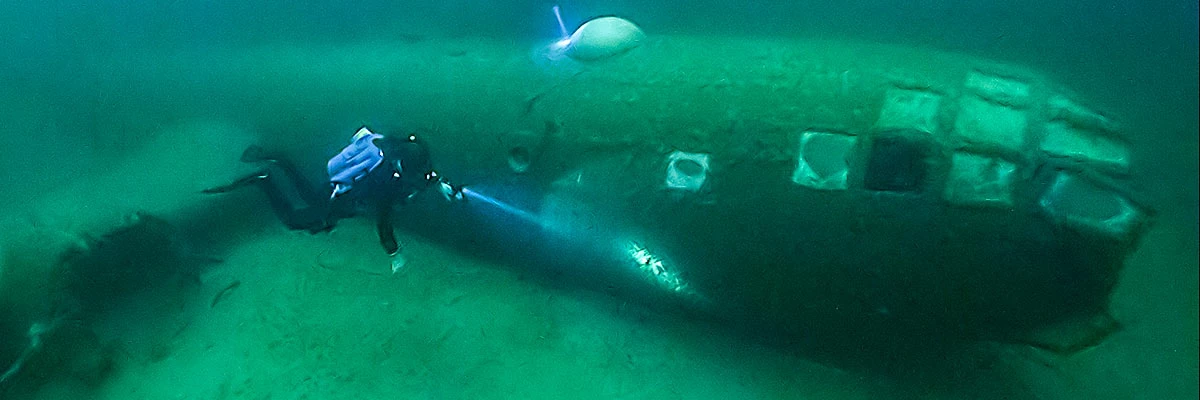
Underwater Resources - Lake MeadUnleash your inner adventurer at the Lake Mead National Recreation Area. With a variety of activities to choose from, there’s something for everyone that’s looking to take a dip into the past.Explore the historic grounds and feel the spirit of the wild west with a visit to one of the many campgrounds and beaches located within the park. Roam old-town ruins, venture out on a hike, observe some of Nevada’s most captivating creatures, and even set-up camp under the star-filled sky. As you let your wandering spirit guide you to experience dives of a lifetime, you’ll discover some of history’s most important moments. Embark on underwater expeditions of varying skill levels as you uncover the sunken treasures of history that rest at the bottom of Lake Mead and Lake Mohave’s waters. 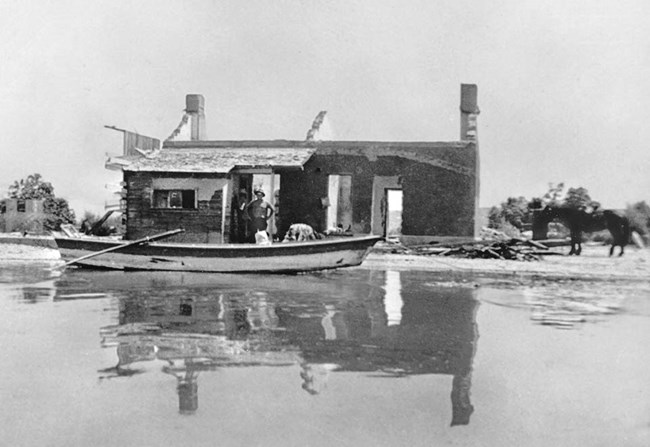
St. ThomasThis former frontier town turned historic site is ideal for those wanting to experience the formerly submerged flooded phenomenon of St. Thomas, Nevada. Originally a Mormon settlement that rested along the Muddy and Virgin Rivers, St. Thomas was a popular stopping point amongst travelers. But in 1928, President Calvin Coolidge signed off on the formation of Boulder Dam, later creating a large lake known as Lake Mead.As the Lake grew, the waters continued to rise; eventually flooding the town higher than 60 feet above the tallest structure. Today, with the lower water levels, St. Thomas is visible allowing visitors’ access to the different streets of the ghost town’s remains. Located in the northern part of the park, the access road to the trailhead gets bumpy so visitors are advised to be cautious in low riding vehicles. The town-site is visible from the higher ground at the trailhead, but those who want to walk its streets can take the three-mile loop trail down through the town. More about St. Thomas 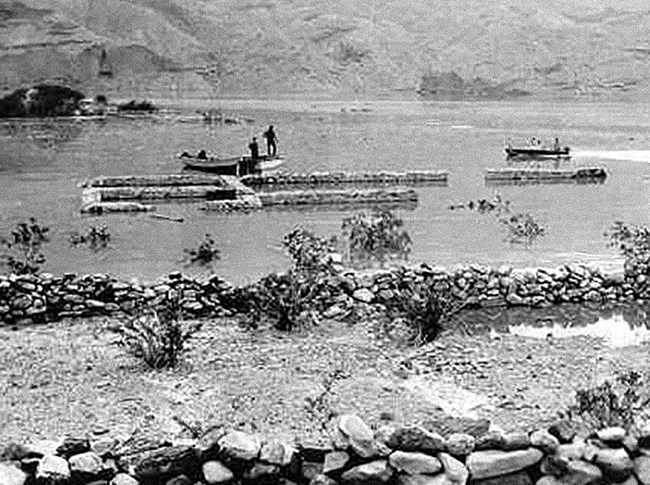
Fort CallvilleLong ago, Bishop Anson Call set out on a journey to establish a colony on the Colorado River – securing a location about 15 miles from modern day Hoover Dam. The Mormon settlement, known as Callville, later became a landing port for Colorado River steamboats during the Civil War until it was deemed to be too far up the river for the steamboats to travel. Many fled the port and eventually after the construction of Hoover Dam, Callville was submerged under 400 feet of water and almost 80 feet of river sediment. Renamed Callville Bay, this area is now a hot spot for aquatic adventures and peaceful stays at the campgrounds for nature lovers across the globe.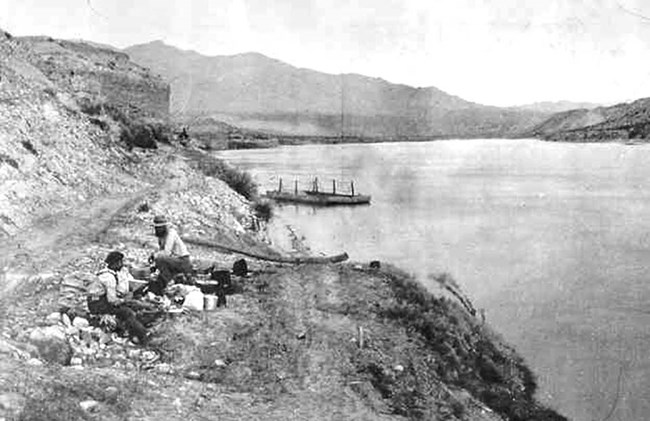
Bonelli’s LandingBefore Hoover Dam was built, Bonelli Landing was home to a ferry service helping travelers cross the Colorado River. Now, it’s the number one spot for boondock campers seeking peaceful solitude. Located in a remote area off of Temple Bar Road, this breathtaking campsite includes a beach that opens up to the secluded Bonelli Bay and Virgin Basin. Enjoy the lake, soak in the sun, hike, and even catch glimpses of some of Nevada’s most precious wildlife.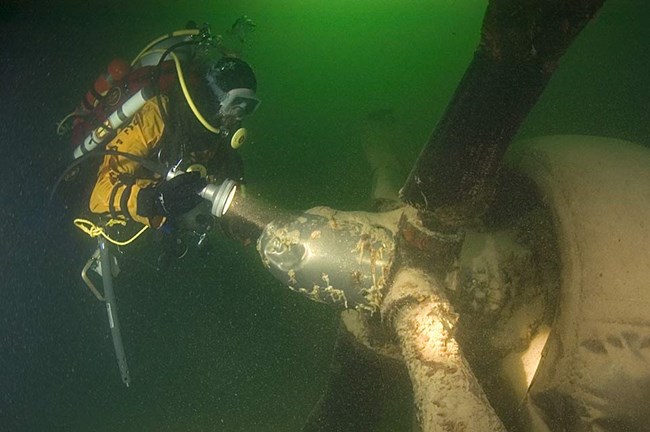
Lake Mead B-29Many are unaware, but a huge piece of history rests deep in the waters of Lake Mead. On July 21st, 1948, a B-29 Superfortress aircraft took off for a testing area near Lake Mead for research before crashing. While the five membered crew survived, the plane sank to its irretrievable location several hundred feet under water. Due to the depth, the location of the plane wasn’t discovered until 55 years after the crash – leading to a team of divers investigating the remains in 2003. At first exploration, one of the divers commented on the plane’s surprisingly good condition, piquing the interest of fellow divers wanting to experience history firsthand. Today, commercial dive tours are available for those looking to explore the B-29 site, now much shallower due to falling lake levels.More about the Lake Mead B-29 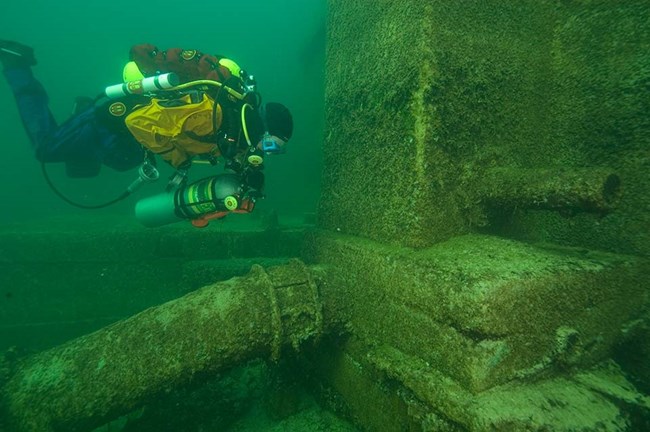
Aggregate PlantAbout 115 feet below the water’s surface is one of the most famous spots for experienced divers – the Aggregate classification plant. Once used to supply all of the sand and gravel to construct the Hoover Dam, this boat-friendly freshwater dive site located at Boulder Basin features four piles of crushed aggregate, with concrete tunnels, the remains of conveyor belts, rail tracks, stairwells, foundations for steel towers, and more. It’s now within recreational dive depth, making it a diver’s dream.More about the Aggregate Plant 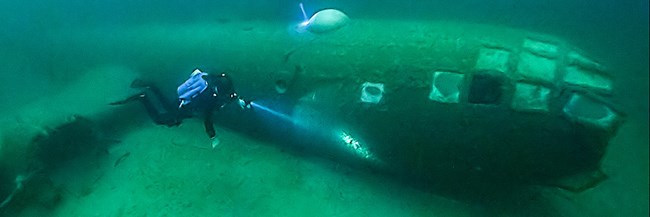
Gold DredgeOne of the biggest strides in western mining history was the creation of gold dredges. These machines’ extracted gold from sand and gravel with the help of mechanics and water. Used across the globe, these dredges paved the way for an influx of treasure seekers. As gold was discovered on both the Arizona and Nevada sides of the river, the dredges became a main source of mining within the area for many years. Today, an abandoned dredge lies beneath the waters of Lake Mohave.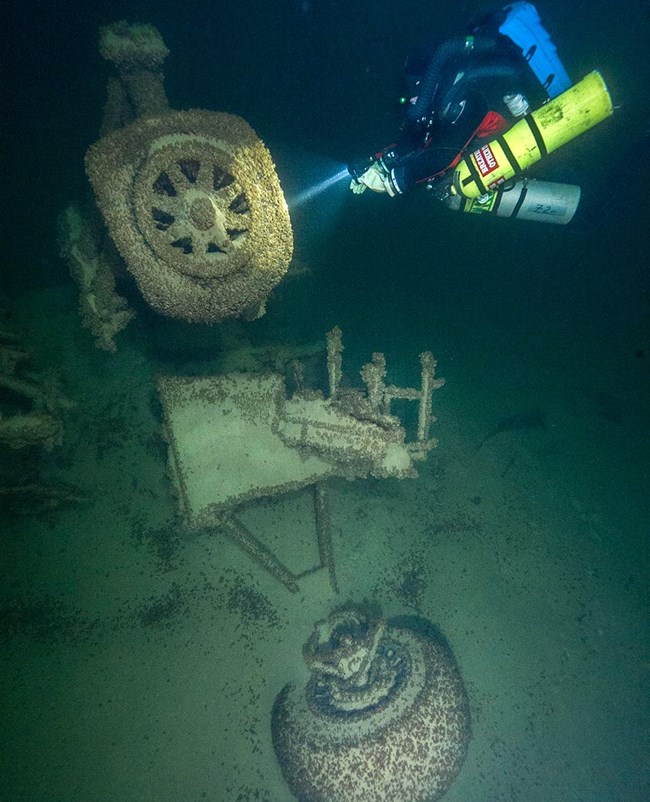
PBY WreckWhat was once a Navy PBY Catalina flying boat is now a historic diving site accessible to only the most qualified divers. October 24th, 1949, the aircraft was attempting a water landing in the Boulder Basin area of Lake Mead when the landing gear hit the water – causing the plane to flip over and burst into flames, slowly sinking to the bottom of the lake. Only one of the five passengers on board escaped the crash with cuts, bruises, and a broken leg. As of Summer, 2013, the plane’s remains lay at about 180 feet down and is opened to qualified divers that welcome the thrill of deep-water exploration.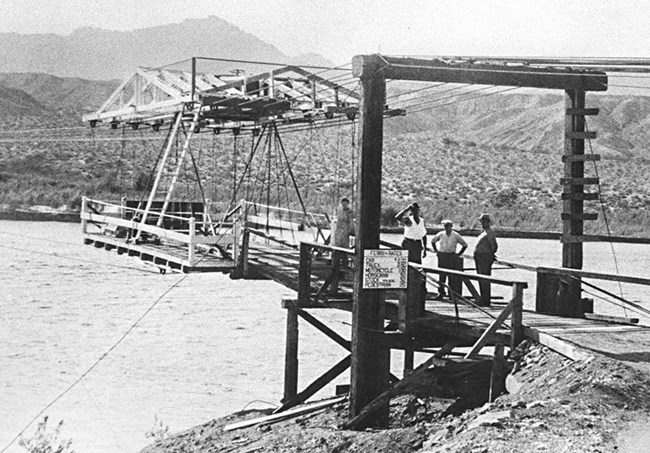
Cottonwood FerryAround the 1930s, ferry services were one of the most popular sources of transportation in the western part of the world. Cottonwood Arial Ferry (an engine-powered ferry boat whose name was inspired by the surrounding cottonwood trees) was used to transport vehicles and individuals across the Colorado River between Nevada and Arizona. At present, the remains of the sunken ferry are located under Lake Mohave.
Cabinsite PointThe aftermath of two boat wrecks sit underneath the surface of Lake Mohave’s waters. North of Katherine Landing, this dive site has plenty to discover including an old sunken van and bus. You’ll come upon the van around 35 feet and track down the bus at about 50 feet below the surface. Past vehicles’ remnants are an entryway to a ravine descending 80-feet deep, showcasing the boats’ wreckage. Accessible by vehicle, visitors can dive from shore and then swim out into the clear waters as they embark on the historic journey below.
The Work BargeOn a legendary dive about four miles beneath Hoover Dam on the Arizona side rests a 38-foot tow barge. The historic workboat dates to 1946, when the barge was first used for assisting on the Dam’s tunnel repair project. Protected by law, this site is meant for admiring the beauty of the past and leaving it to simply be for posterity and future divers. |
Last updated: April 8, 2021
